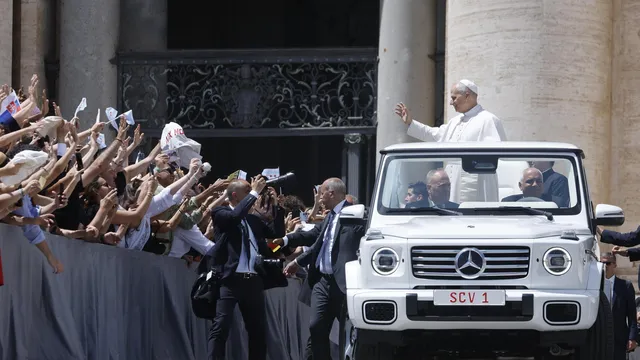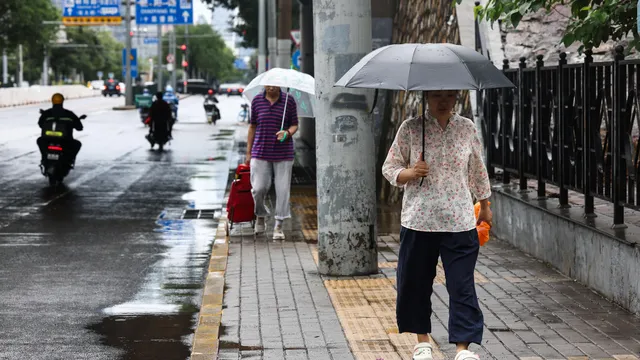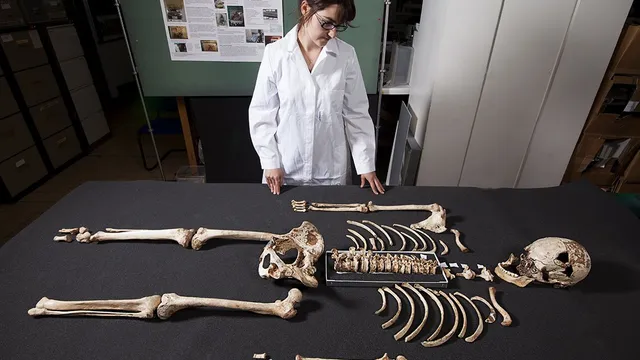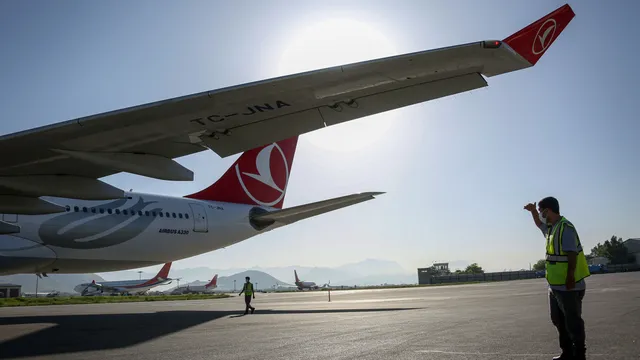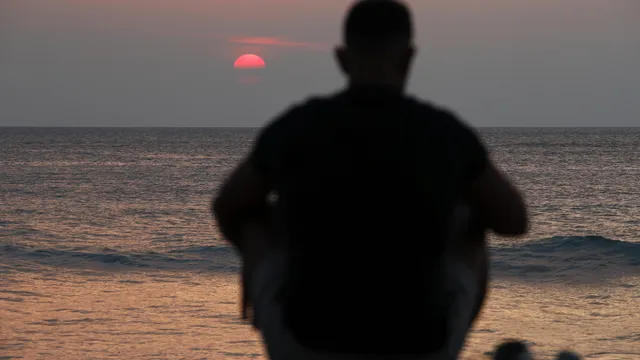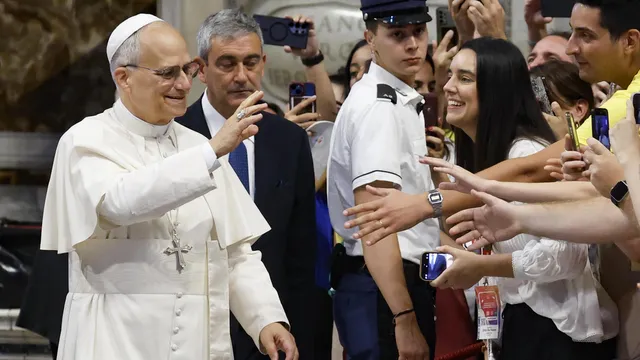Sister Albertine, a young French Catholic nun, stood outside the Vatican with her phone in hand, ready to shoot another video for her hundreds of thousands of online followers.
The 29-year-old nun was among hundreds of Catholic influencers gathered in Rome for a Vatican-organized forum on social media.
The Holy See calls these people “digital missionaries.” In an unprecedented move for an institution with a centuries-old tradition, Pope Leo XIV celebrated a special Mass for them in St. Peter’s Basilica, urging them to create content for those who “need to discover the Lord.”
After years of wariness of social media, the Catholic Church is now embracing it as an important tool for spreading the faith, especially as church attendance dwindles.
For Sister Albertine, it’s the perfect “missionary ground.” In the majestic basilica, she was part of a crowd of religious influencers who surrounded the new pope and broadcast the event live on their smartphones in one of the holiest places in Christianity.
“The fact that the Vatican has gathered its ‘Instagram disciples’ has a deep symbolic meaning. They are telling us: ‘It’s important, act, we are with you and we will seek together the path to the new evangelization,’” she told AFP.
The meeting of influencers is part of the Vatican’s “Youth Jubilee” initiative, which this week attracted thousands of young believers to Rome.
“The great influencer is God”
Sister Albertine has more than 320,000 followers on Instagram, and some of her TikTok videos have exceeded a million views. She shares prayers and scenes from daily life in monasteries, mostly in France.
In one of her videos, she crosses herself and says: “If you feel alone, I suggest we pray together.”
But the forum also had another purpose: to express the Vatican’s official position on the ever-growing online religious content in the age of social media and artificial intelligence.
“You are not just influencers, you are missionaries,” said Cardinal Luis Antonio Tagle, one of the few senior clergy active on social media.
“The great influencer is God,” he added.
However, Cardinal Tagle also issued a warning: “Jesus is not a voice created by a digital program.”
Pope Leo urged his influencers to seek balance at a time when society is “hyperconnected” and “bombarded with images – sometimes false or distorted.”
“It is not just about creating content, but about creating encounters between hearts,” the 69-year-old pontiff stressed.
Achieving this balance, however, is not always easy – some Catholic priests are already active on social media themselves. One of them is Father Giuseppe Fusari – far from the stereotype of a “traditional” priest, he wears tight shirts that reveal the tattoos on his arms. He has 63,000 followers on Instagram and mixes content about Italian church architecture with sermons.
“Everyone uses social media, so we have to be there,” said Father Fusari. He traveled from the northern city of Brescia to attend the event in the Vatican. His goal is to reach as many people online as possible and share the word of God with them – including through videos of his Chihuahua eating spaghetti.
But it’s not just priests and nuns who are involved in this digital evangelization. Ordinary believers are also taking the initiative. One of them is Francesca Parisi, a 31-year-old teacher from Italy who converted to Catholicism later in life. Today, she has around 20,000 followers on TikTok, where she aims to present Catholicism in a modern light.
Her target audience is people who have “fallen away” from the Church.
“If God can do it for me, believe me, He can do it for you,” she says. | BGNES

 Breaking news
Breaking news
 Europe
Europe
 Bulgaria
Bulgaria
